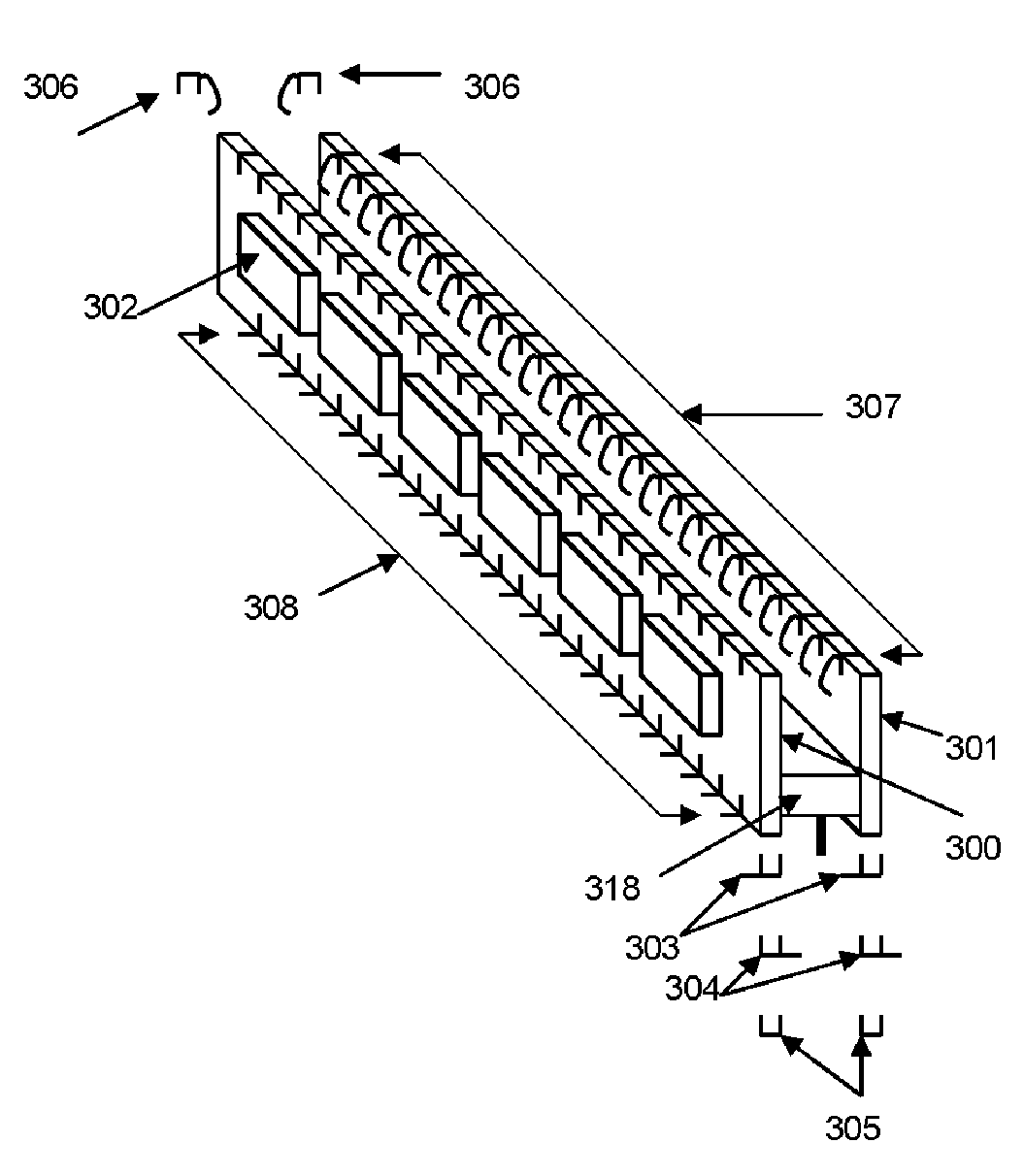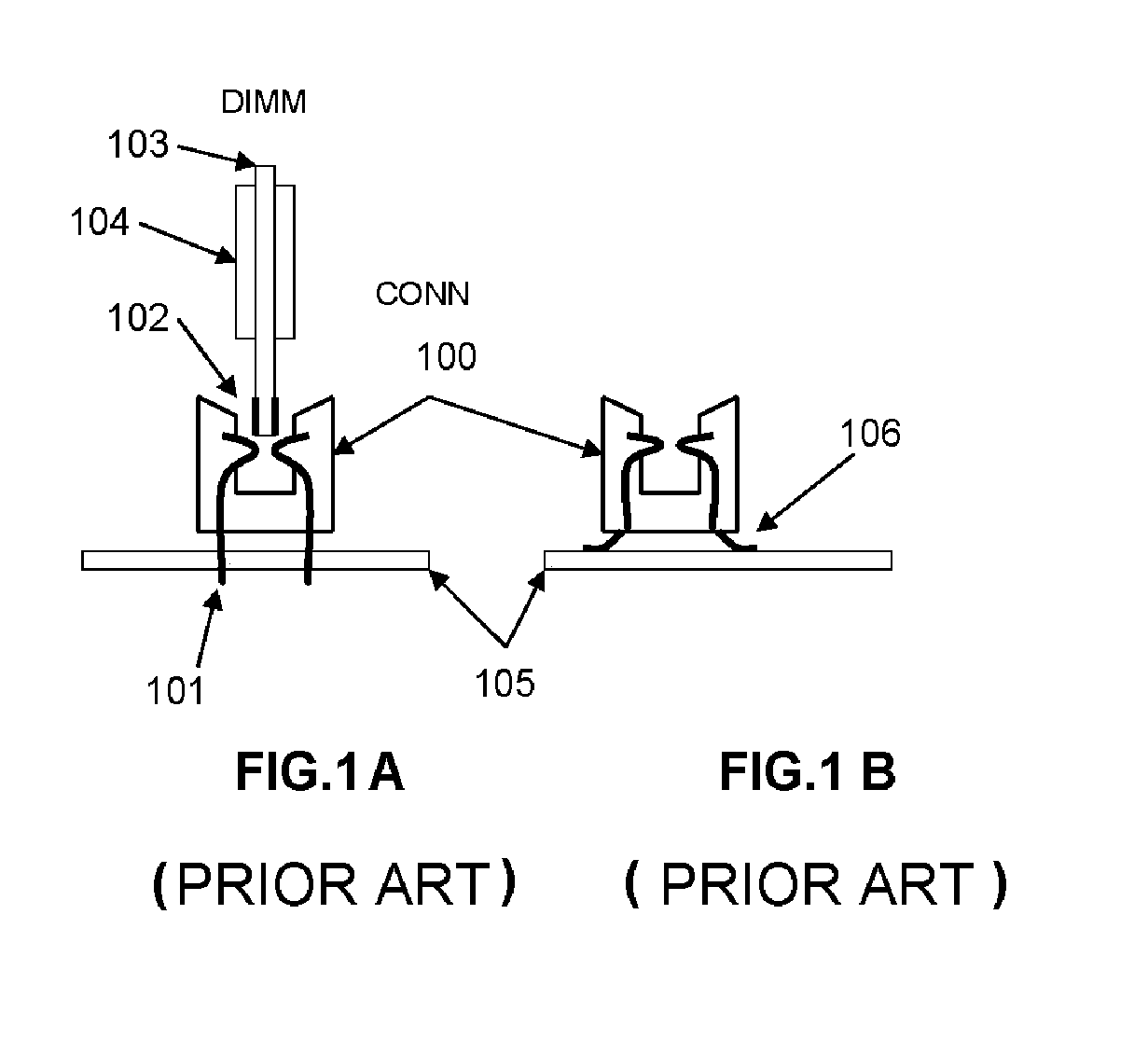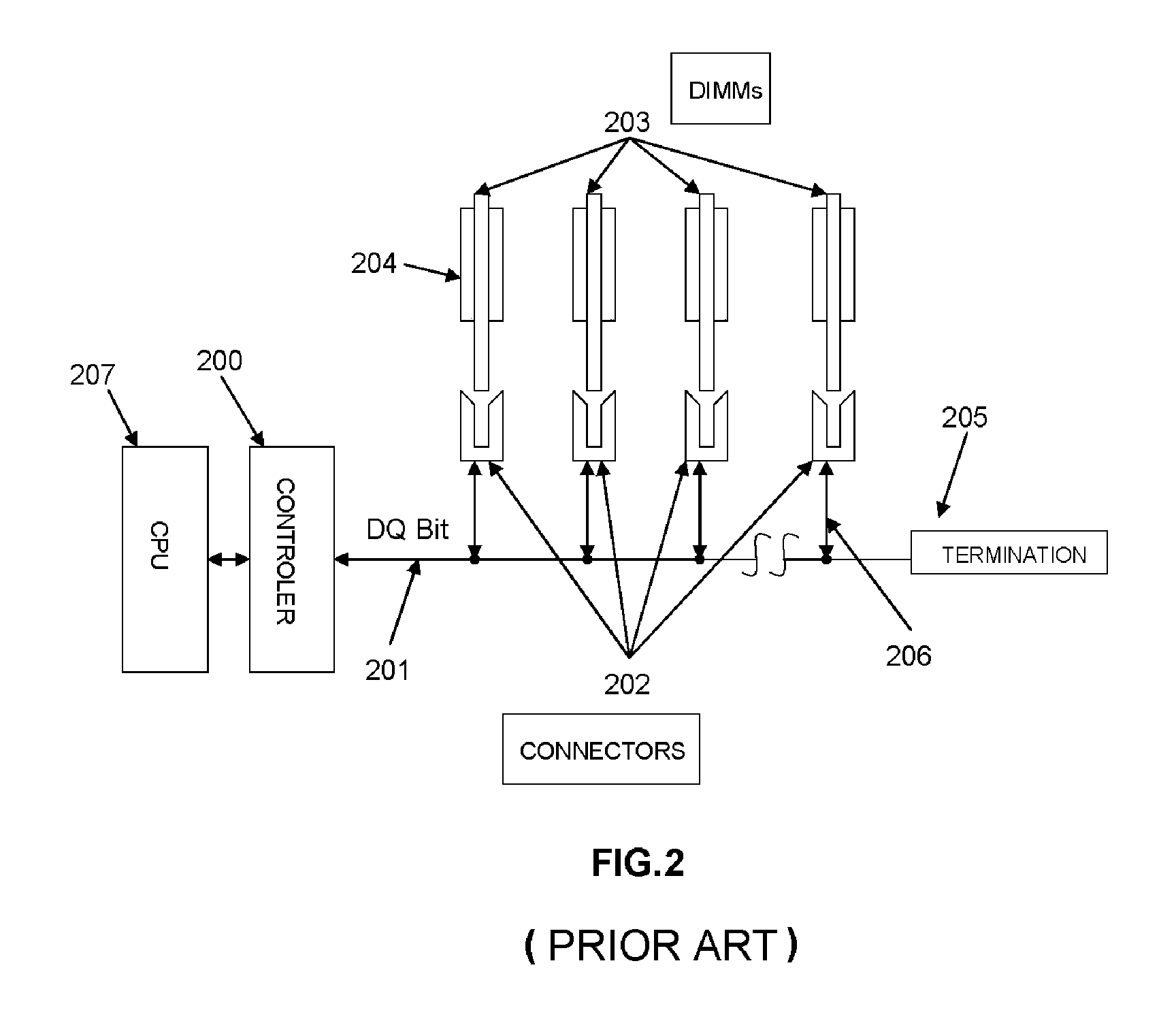Active Dual in Line Memory Module Connector with Re-driven Propagated Signals
a dual-in-line memory module and propagation signal technology, which is applied in the direction of fixed connections, coupling device connections, printed circuit aspects, etc., can solve the problems of reflection of signals, degrade signal quality, and none of the prior art connectors used in the industry have ever accommodated active circuits, etc., to facilitate high-density memory module system operation
- Summary
- Abstract
- Description
- Claims
- Application Information
AI Technical Summary
Benefits of technology
Problems solved by technology
Method used
Image
Examples
Embodiment Construction
[0050]The invention is better explained by reference to the drawings described above, and to the detailed descriptions and explanations which follow.
DEFINITIONS
[0051]The term “PCB” will be used to describe printed circuit board assemblies, which contain conducting materials including wiring leads, pads, and other features affixed to the surface, usually by a process of etching. Unless otherwise specified, PCBs are assumed to be rigid.
[0052]The term “Flex PCB” will be used to describe printed circuit board assemblies which are flexible.
[0053]The term “re-driver chip” will be used to describe the integrated circuit chip, located on the connector of the present invention or in close proximity to it, which contains both receivers and drivers that process data signals of the memory modules, in addition to other circuitry to support these functions. The re-driver chip in an alternative embodiment may also contain circuits that perform addressing and command and control functions.
[0054]The...
PUM
 Login to View More
Login to View More Abstract
Description
Claims
Application Information
 Login to View More
Login to View More - R&D
- Intellectual Property
- Life Sciences
- Materials
- Tech Scout
- Unparalleled Data Quality
- Higher Quality Content
- 60% Fewer Hallucinations
Browse by: Latest US Patents, China's latest patents, Technical Efficacy Thesaurus, Application Domain, Technology Topic, Popular Technical Reports.
© 2025 PatSnap. All rights reserved.Legal|Privacy policy|Modern Slavery Act Transparency Statement|Sitemap|About US| Contact US: help@patsnap.com



